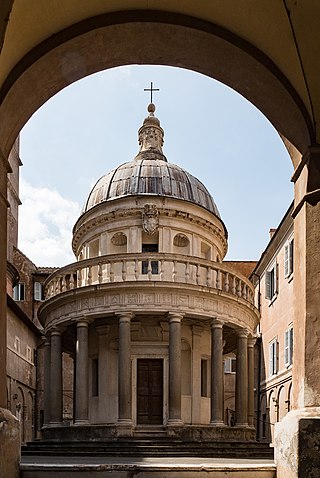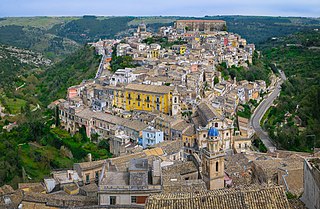History
It is not precisely known when the palace was built, although a valid terminus post quem is given by the International Gothic style of the arches making up the porticoes on the facade, according to which the construction date could be in the second half of the 13th century (when the Gothic style spread in Lombardy) at earliest. Anyway, the palace was probably erected onto a pre-existing building.
The palace began hosting the town hall during the first half of the 14th century; through the centuries it was then ceded to private families, starting from the Marquisses from the Sforza family, and then to the Villani Marquisses and to the Schizzis. The last owners were the Bellinzaghis and the Gallavresis, who kept the property until the first half of the 20th century.
Just after the end of World War II, the town administration bought back the palace to move the town hall there, from the old building in via Mangone.
The palace underwent a heavy restructure in 1981; the restructure of the facade revealed characteristic features which are typical of the International Gothic style.
Description
Structure
The palace lies in piazza Garibaldi, the central square in the old town; it is surrounded by the pedestrian streets of the historical centre an all the other sides.
By looking at old maps, one can easily detect the existence of two ancient suspended pathways connecting the palace to two neighbouring buildings, home to the podestà and the governor; these were destroyed in 1850, when Palazzo Gallavresi was owned by the Bellinzaghis.
Facade
Above the porticoes dating back to the 15th century, the facade features marble medals with the faces of four Italian patriots: Giuseppe Mazzini, Giuseppe Garibaldi, Vittorio Emanuele II and Camillo Benso, conte di Cavour. The medals were made between 1884 and 1889.
Between the windows there used to lie the coat of arms of the town marquesses (from the earliest to the last, the Viscontis, the Sforzas, the Villanis and the Schizzis).
Interior
The main characteristic of the interior of the palace is a majestic stairway, featuring a starry sky on the ceiling, leading to the town council hall, in the upper floor. The hall is typically baroque, and is by far the most richly decorated in the building; it features a decorative bend on all four sides, just below the ceiling, with pictures of winged putti playing instruments. The walls feature baroque frescoes. The floor features a mosaic representing the coat of arms of the town. The entrance of the hall hosts a sculpture of Emilio Gallavresi, who was born and lived in the building and became a member of the Italian parliament as a member of the Italian Socialist Party; the sculpture was made by Enrico Pancera.

Renaissance architecture is the European architecture of the period between the early 15th and early 16th centuries in different regions, demonstrating a conscious revival and development of certain elements of ancient Greek and Roman thought and material culture. Stylistically, Renaissance architecture followed Gothic architecture and was succeeded by Baroque architecture. Developed first in Florence, with Filippo Brunelleschi as one of its innovators, the Renaissance style quickly spread to other Italian cities. The style was carried to Spain, France, Germany, England, Russia and other parts of Europe at different dates and with varying degrees of impact.

Lodi is a city and comune in Lombardy, northern Italy, primarily on the western bank of the River Adda. It is the capital of the province of Lodi.

Vigevano is a town and comune in the province of Pavia, Lombardy in northern Italy. A historic art town, it is also renowned for shoemaking and is one of the main centres of Lomellina, a rice-growing agricultural district. Vigevano received the honorary title of city with a decree of Duke Francis II Sforza on 2 February 1532. It is famed for its beautiful Renaissance "Piazza Ducale" in the centre of the town.

Todi is a town and comune (municipality) of the province of Perugia in central Italy. It is perched on a tall two-crested hill overlooking the east bank of the river Tiber, commanding distant views in every direction. It was founded in antiquity by the Umbri, at the border with Etruria; the family of Roman Emperor Trajan came from Todi.

The Grand Canal is a channel in Venice, Italy. It forms one of the major water-traffic corridors in the city.

Ragusa is a city and comune in southern Italy. It is the capital of the province of Ragusa, on the island of Sicily, with 73,288 inhabitants in 2016. It is built on a wide limestone hill between two deep valleys, Cava San Leonardo and Cava Santa Domenica. Together with seven other cities in the Val di Noto, it is part of a UNESCO World Heritage Site.

Pesaro is a city and comune in the Italian region of Marche, capital of the Province of Pesaro e Urbino, on the Adriatic Sea. According to the 2011 census, its population was 95,011, making it the second most populous city in the Marche, after Ancona. Pesaro was dubbed the "Cycling City" by the Italian environmentalist association Legambiente in recognition of its extensive network of bicycle paths and promotion of cycling. It is also known as "City of Music", for it is the birthplace of the composer Gioacchino Rossini. In 2015 the Italian Government applied for Pesaro to be declared a "Creative City" in UNESCO's World Heritage Sites. In 2017 Pesaro received the European City of Sport award together with Aosta, Cagliari and Vicenza.

The province of Chieti is a province in the Abruzzo region of Italy. Its provincial capital is the city Chieti, which has a population of 50,770 inhabitants. The province has a total population of 387,649 inhabitants as of 2017 and spans an area of 2,599.58 square kilometres (1,003.70 sq mi). It is divided into 104 comuni (comune) and the provincial president is Mario Pupillo.

Iseo is a town and comune in the province of Brescia, in Lombardy, Italy, on the south shore of Lake Iseo. It is bounded by the communes of Provaglio d'Iseo, Sulzano, Polaveno and Paratico.

Caravaggio is a town and comune in the province of Bergamo, in Lombardy, Italy, 40 kilometres (25 mi) east of Milan.

Cassano d'Adda is a town and comune in the Metropolitan City of Milan, Lombardy, Italy, located on the right side of the Adda River. It is on the border of the Metropolitan City of Milan and the province of Bergamo. It is served by Cassano d'Adda railway station.

Piazza Armerina is a comune in the province of Enna of the autonomous island region of Sicily, southern Italy.

Buda Castle is the historical castle and palace complex of the Hungarian Kings in Budapest. It was first completed in 1265, although the massive Baroque palace today occupying most of the site was built between 1749 and 1769. The complex in the past was referred to as either the Royal Palace or the Royal Castle. The castle now houses the Hungarian National Gallery and the Budapest Historical Museum.

Renaissance Revival architecture is a group of 19th century architectural revival styles which were neither Greek Revival nor Gothic Revival but which instead drew inspiration from a wide range of classicizing Italian modes. Under the broad designation Renaissance architecture nineteenth-century architects and critics went beyond the architectural style which began in Florence and Central Italy in the early 15th century as an expression of Renaissance humanism; they also included styles that can be identified as Mannerist or Baroque. Self-applied style designations were rife in the mid- and later nineteenth century: "Neo-Renaissance" might be applied by contemporaries to structures that others called "Italianate", or when many French Baroque features are present.

Atessa is an municipality in the province of Chieti, Abruzzo, south-eastern Italy. It is part of the Val di Sangro mountain community. It is the largest municipality in the province by extension and eighth by population.

Asola is a comune in the province of Mantua, Lombardy. It received the honorary title of city with a presidential decree of October 23, 1951.

The Royal Palace of Milan was the seat of government in the Italian city of Milan for many centuries. Today, it serves as a cultural centre and it is home to international art exhibitions. It spans through an area of 7,000 square meters and it regularly hosts modern and contemporary art works and famous collections in cooperation with notable museums and cultural institutions from across the world. More than 1,500 masterpieces are on display annually.

Casa Panigarola, also known as Palazzo dei Notai, is a historic building of Milan, Italy, located in Piazza Mercanti, former city centre in the Middle Ages. It is named after the House of Panigarola, a family of notaries from Gallarate, that owned the building until 1741. The building thus served as a notary seat, and the activities therein were strictly related to those that occurred in the adjacent Palazzo della Ragione, where trials were held.

Czech Renaissance architecture refers to the architectural period of the early modern era in Bohemia, Moravia and Czech Silesia, which then comprised the Crown of Bohemia and today constitute the Czech Republic. The Renaissance style flourished in the Czech lands from the late 15th century to the first half of the 17th century.

Palazzo Cornazzani is a palace in Pavia, in Lombardy, where, between 1895 and 1896, Albert Einstein lived.























